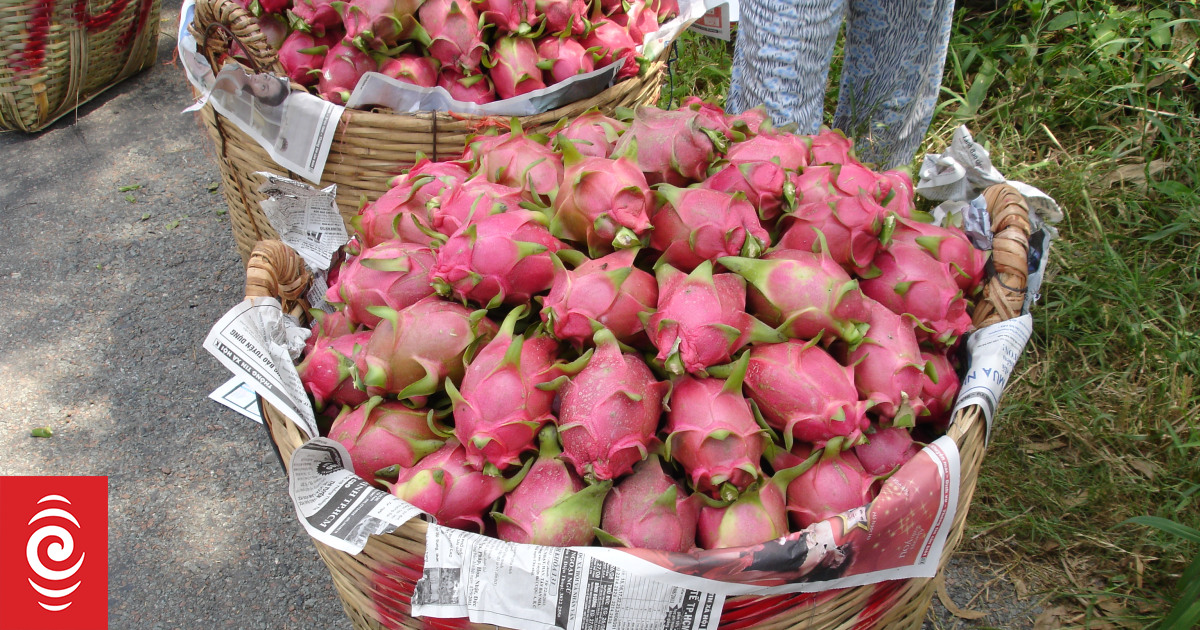
Dragon fruit developed by Plant and Food Research.
Photo: Supplied / Plant and Food Research.
Moves by a New Zealand based company to commercialise three new dragon fruit varieties could present opportunities for growers in the Far North.
Scientists from Plant & Food Research have been working with partners at the Southern Horticultural Research Institute in Vietnam over the last decade on a joint dragon fruit breeding programme and have developed the new varieties.
New Zealand-based company VentureFruit has now joined the collaboration and obtained exclusive global commercialisation rights to the first three varieties from the programme.
All three are red-skinned and are described as having a sweeter, more aromatic flavour than current varieties and a crisp dense texture.
They are believed to be the first canker-tolerant dragon fruit to be commercialised. Canker is a highly destructive disease of dragon fruit.
VentureFruit chair Peter Landon-Lane said the company hoped to have 250 hectares of the new varieties planted by 2030.
VentureFruit was talking to different parties around the world, but there were also trials underway in Kerikeri looking at the potential for growers here, Landon-Lane said.
“We know there is renewed interest in tropical or subtropical fruit and there is some dragon fruit already grown [in New Zealand].
“The idea of having some new, more pest and disease-tolerant varieties that eat better, have great colour, texture and better eating characteristics, we think that’s a real opportunity that might turn into a great addition to New Zealand’s horticulture scene.”
Fruit from the new varieties was expected to be available to consumers in 2027.
Plant & Food Research chief executive David Hughes said the launch of the new varieties demonstrated the impact international development programmes could have.
“We’re really excited to bring two of our long-term collaborators together and support the ongoing growth of the dragon fruit sector, not just in Vietnam but also elsewhere.”




